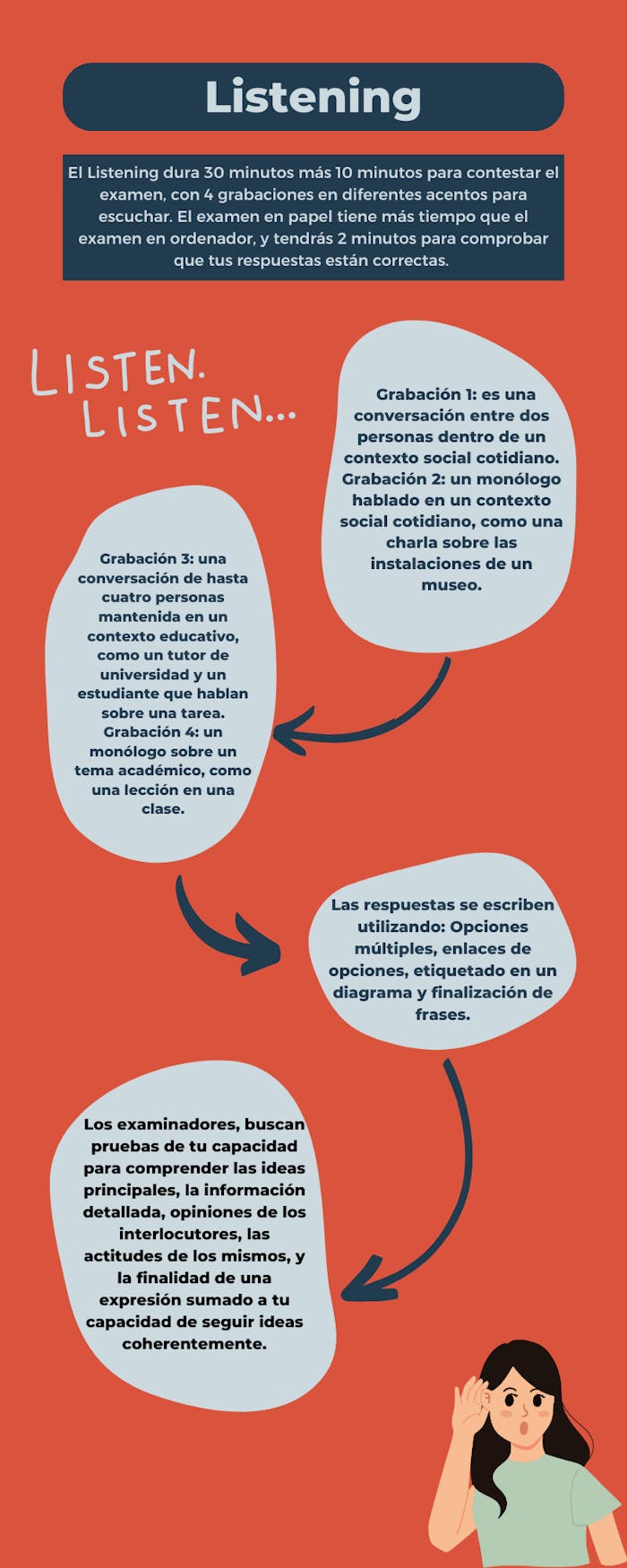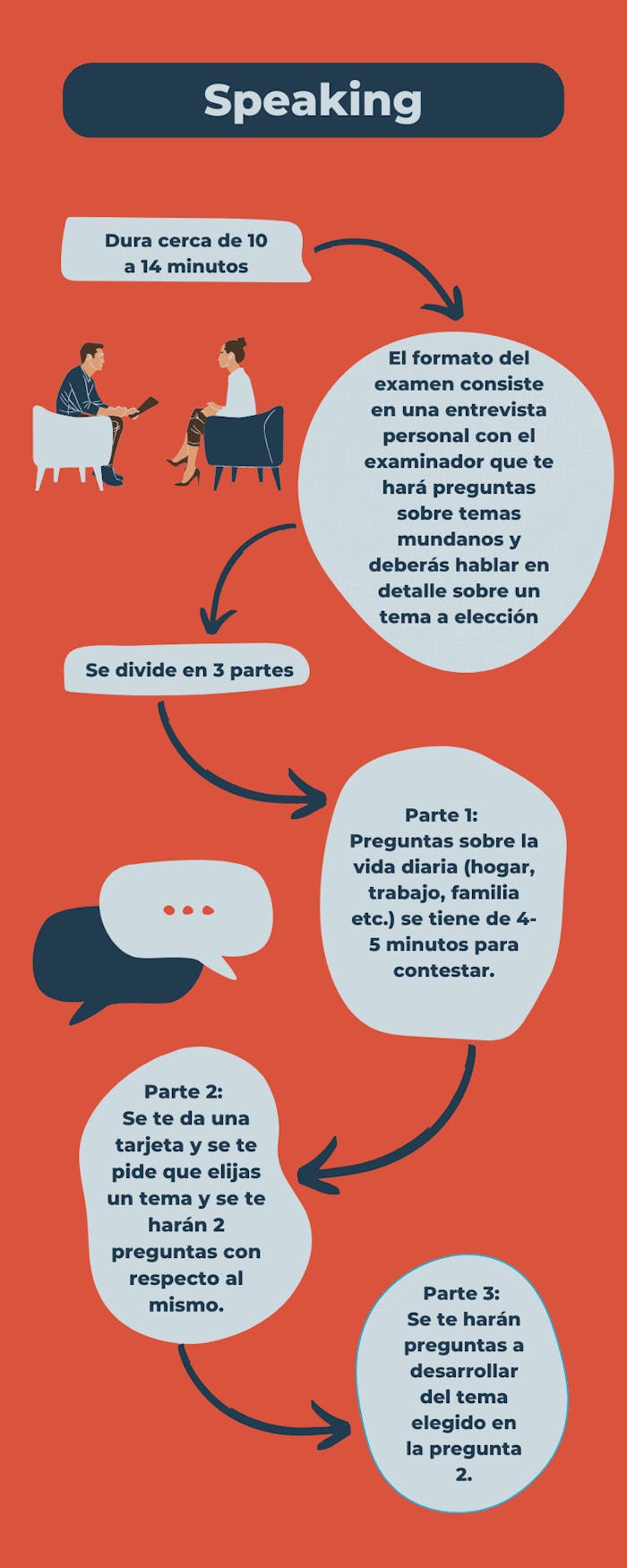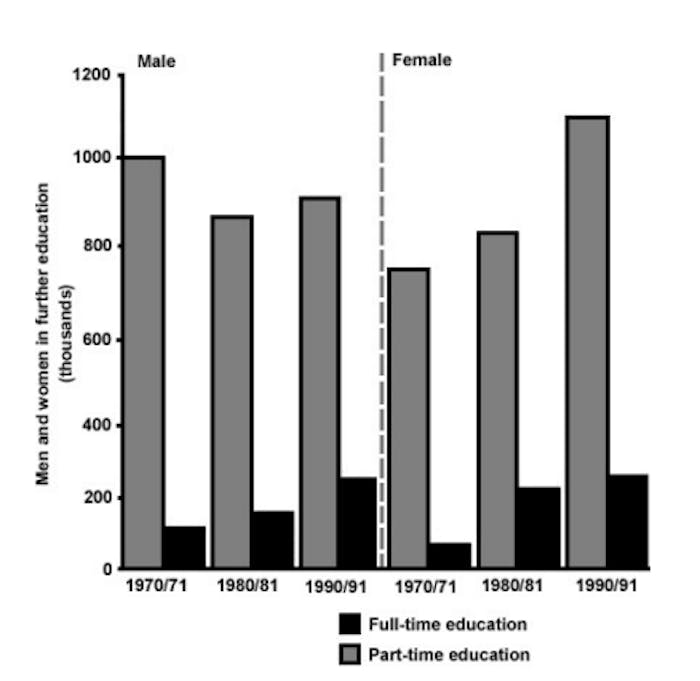Examen IELTS: Simulación de examen de inglés, preparación, formato y puntajes
El examen IELTS: tiene 3 versiones, Académico, General Training, IELTS UKVI y Life Skills . Todos tienen una división de 4 partes similar al TOEFL: Listening, Reading, Writing y Speaking. Los exámenes se dan en centros autorizados y especializados.
De todos modos, pese a que tengan el mismo formato, estos 3 modelos de examen tienen una finalidad y para que se dan diferentes entre sí. El académico es para quien desee estudiar en países angloparlantes, el general es para quien desee mudarse a naciones de habla inglesa, el UKVI es para emigrar al Reino Unido y Life Skills prueba inglés básico.
Desde Speakingathome te podemos ayudar para que puedas rendir lo mejor de ti cuando estés frente al examen.

Formato de la IELTS
La evaluación, como se ha mencionado antes, se da en 4 partes:

El Reading tiene 60 minutos, se deben leer 3 textos largos (Con diagramas, gráficos e ilustraciones), los textos pueden variar desde formatos descriptivos y factuales, hasta discursivos y analíticos. Tiene 40 preguntas creadas para poner a prueba el abanico de habilidades de comprensión lectora del examinado, ergo la comprensión de las ideas principales, los detalles el argumento lógico y reconocimiento de las opiniones de los autores del texto, actitudes y finalidad. Los textos son tomados por artículos de diarios, revistas, etc; y elegidos porque no están hechos para audiencias especializadas.

El Writing dura 60 minutos y se divide en 2 tareas: en la primera se debe hacer un escrito de mínimo 150 palabras en donde deberás resumir, explicar o describir el texto brindado. En la segunda se tendrá que escribir un ensayo donde se argumenta tu respuesta frente a un punto de vista, argumento o situación conflictiva y tiene un mínimo de 250 palabras.
Puntajes del IELTS
Los puntajes del examen son iguales para todos los tipos de IELTS (Academic, General Training,y IELTS UKVS), pero en Life Skills es aprobado o desaprobado. La forma en que se califican los exámenes va desde grados (o franjas) del 0 al 9.
Las calificaciones, dependiendo de los resultados, pueden dividirse en grados completos (1,3,5) o grados medios (2.5, 4.5 etc.). Los grados de calificación se dan de la siguiente forma:
- 9: Usuario experto
- 8: Muy buen usuario
- 7: Buen usuario
- 6: Usuario competente
- 5: Usuario modesto
- 4: Usuario limitado
- 3: Usuario muy limitado
- 2: Usuario intermitente
- 1: No usuario
- 0: No realizó el examen
Estos resultados comparados con el Marco Común Europeo de Referencia serían los siguientes: 4 equivale a un nivel A2 bordeando al B1, desde el 4.5 al 5 equivale al nivel B1, el 5.5 hasta el 6.5 equivale al B2, el 7 al 8 equivale al C1 y finalmente desde el 8 al 9 equivale a un nivel C2 en inglés.
Preparación para el IELTS
Dar un examen nunca es fácil siempre se tiene una sensación en uno de que nunca está suficientemente preparado, pero esos sentimientos de incapacidad siempre pueden solucionarse con un esfuerzo claro y constante.
Para prepararse para el examen IELTS la mayoría de las academias de inglés recomiendan ponerse a estudiar con unos 6 meses de antelación a la fecha de examen. Ya que cada sección del examen requiere una forma de prepararse diferente.
Reading: Lo necesario para poder prepararse para el reading es, practicar la comprensión lectora de los textos, las reglas ortográficas, las verbales etc. Es recomendable que leas textos en inglés, como sitios web de noticias (bbc.com, cnn.com etc.) si deseas tener una cultura general de cómo es el uso del habla, pero también puedes leer cualquier página siempre y cuando seas en inglés.
Writing: Es recomendable que para mejorar tus capacidades de escritura selecciones un tema al azar y trates de escribir textos largos durante no más de 20 minutos y después trata de cronometrar tu tiempo para que sea cada vez menos.
Listening: Para la práctica auditiva es recomendable escuchar conferencias en inglés para entrenar el oído pero también el escuchar música puede ayudar, no es recomendable escuchar canciones que tengan un acento muy cerrado o un fuerte uso del vocablo coloquial del músico sino canciones más regulares como las de Frank Sinatra o Elvis Presley.
Speaking: Si quieres hablar inglés con total fluidez es recomendable comunicarse con angloparlantes nativos, una opción es que vayas a los bares donde se junten inmigrantes angloparlantes, pero es mejor si decides tomar un curso online para poder practicar.
Simulación de examen IELTS
Este es un simulacro, la experiencia en la vida real puede variar.
Listening
PART 1
Questions 1 – 8 Complete the form below. Write NO MORE THAN THREE WORDS AND/OR A NUMBER for each answer.
PACKHAM’S SHIPPING AGENCY – customer quotation form
Name: Jacob 1 …………
Address to be collected from: 2 ………… College, Downlands Rd
Town: Bristol
Postcode: 3 …………
Size of container: Length: 1.5m Width: 4 ………… Height: 5 …………
Contents: Clothes 6 ………… 7 …………
Total estimated value: 8 £…………
Reading
This is an extract from an Academic Reading passage on the development of rockets. The text preceding this extract explored the slow development of the rocket and explained the principle of propulsion.
The invention of rockets is linked inextricably with the invention of 'black powder'. Most historians of technology credit the Chinese with its discovery. They base their belief on studies of Chinese writings or on the notebooks of early Europeans who
settled in or made long visits to China to study its history and civilisation. It is probable that, some time in the tenth century, black powder was first compounded from its basic ingredients of saltpetre, charcoal and sulphur. But this does not mean that it was immediately used to propel rockets. By the thirteenth century, powder propelled fire arrows had become rather common. The Chinese relied on this type of technological development to produce incendiary projectiles of many sorts, explosive grenades and possibly cannons to repel their enemies. One such weapon was the 'basket of fire' or, as directly translated from Chinese, the 'arrows like flying leopards'.
The 0.7 metre-long arrows, each with a long tube of gunpowder attached near the point of each arrow, could be fired from a long, octagonal-shaped basket at the same time and had a range of 400 paces. Another weapon was the 'arrow as a flying sabre', which could be fired from crossbows. The rocket, placed in a similar position to other rocket-propelled arrows, was designed to increase the range. A small iron weight was attached to the 1.5m bamboo shaft, just below the feathers, to increase the arrow's stability by moving the centre of gravity to a position below the rocket. At a similar time, the Arabs had developed the 'egg which moves and burns'. This 'egg' was apparently full of gunpowder and stabilised by a 1.5m tail. It was fired using two rockets attached to either side of this tail.
It was not until the eighteenth century that Europe became seriously interested in the possibilities of using the rocket itself as a weapon of war and not just to propel other weapons. Prior to this, rockets were used only in pyrotechnic displays. The incentive for the more aggressive use of rockets came not from within the European continent but from far-away India, whose leaders had built up a corps of rocketeers and used rockets successfully against the British in the late eighteenth century.
The Indian rockets used against the British were described by a British Captain serving in India as ‘an iron envelope about 200 millimetres long and 40 millimetres in diameter with sharp points at the top and a 3m-long bamboo guiding stick’. In the early nineteenth century the British began to experiment with incendiary barrage rockets. The British rocket differed from the Indian version in that it was completely encased in a stout, iron cylinder, terminating in a conical head, measuring one metre in diameter and having a stick almost five metres long and constructed in such a way that it could be
firmly attached to the body of the rocket. The Americans developed a rocket, complete with its own launcher, to use against the Mexicans in the mid-nineteenth century. A long cylindrical tube was propped up by two sticks and fastened to the top
of the launcher, thereby allowing the rockets to be inserted and lit from the other end. However, the results were sometimes not that impressive as the behaviour of the rockets in flight was less than predictable
Questions 1 – 3
Look at the following items (Questions 7-10) and the list of groups below. Match each item with the group which first invented or used them.
Write the correct letter A-E in boxes 7-10 on your answer sheet. NB You may use any letter more than once.
7 black powder
8 rocket-propelled arrows for fighting
9 rockets as war weapons
10 the rocket launcher
First invented or used by
A the Chinese
B the Indians
C the British
D the Arabs
E the Americans
Writing
TASK 1
You should spend about 20 minutes on this task.
The chart below shows the number of men and women in further education in Britain in three periods and whether they were studying full-time or part-time. Summarise the information by selecting and reporting the main features, and make comparisons where relevant
Write at least 150 words.
TASK 2
You should spend about 40 minutes on this task.
Write about the following topic:
Children who are brought up in families that do not have large amounts of money are better prepared to deal with the problems of adult life than children brought up by wealthy parents. To what extent do you agree or disagree with this opinion?
Give reasons for your answer and include any relevant examples from your own knowledge or experience. Write at least 250 words
Speaking
Part 1 Introduction and interview
[This part of the test begins with the examiner introducing himself or herself and
checking the candidate’s identification. It then continues as an interview.]
Let’s talk about your home town or village.
• What kind of place is it?
• What’s the most interesting part of your town/village?
• What kind of jobs do the people in your town/village do?
• Would you say it’s a good place to live? (Why?)
Let’s move on to talk about accommodation.
• Tell me about the kind of accommodation you live in?
• How long have you lived there?
• What do you like about living there?
• What sort of accommodation would you most like to live in?
Part 2 – Individual long turn
Candidate Task Card
Describe something you own which is very important to you.
You should say:
where you got it from
how long you have had it
what you use it for
and explain why it is important to you.
You will have to talk about the topic for 1 to 2 minutes.
You have one minute to think about what you're going to say.
You can make some notes to help you if you wish.
Rounding off questions
• Is it valuable in terms of money?
• Would it be easy to replace?
Part 3 – Two-way discussion
Let’s consider first of all how people’s values have changed.
• What kind of things give status to people in your country?
• Have things changed since your parents’ time?
Finally, let’s talk about the role of advertising.
• Do you think advertising influences what people buy?

